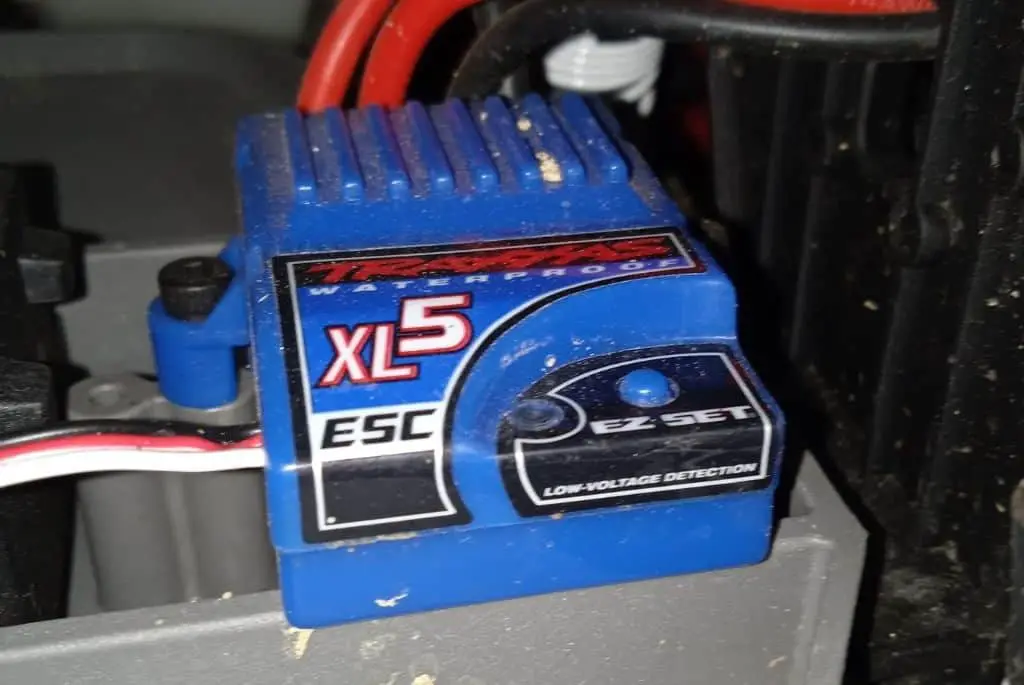
The electronic speed control (ESC) is essential for the efficient running of an electric motor.
It controls the speeding up and slowing down of the motor by making sure sufficient levels of power are delivered when required. However, while its job is to help keep your motor in a reliable state, the ESC is not always quite as reliable itself. Let’s talk about it.
One way is to swap out the connected motor for another one that is known to be functional. If the secondary motor doesn’t run or runs badly, then there is a fair chance the ESC has problems. You can also use a multimeter continuity test mode to test for electrical continuity on the ESC.
The ability to identify a broken or dysfunctional ESC can save you time and money that would otherwise have been spent going down several wrong rabbit holes.
The following article goes deeper into some of the approaches to determining your ESC’s functionality.
How do you test an electronic speed controller?
A non-functioning ESC is one of those things that one might initially overlook when an electric motor seemingly spins its last cycle.
A common mistake is to simply assume that the motor is the problem. I would advise against this as you might make the follow-up mistake of hastily purchasing a new motor.
What you need to do instead is find a way to test the device before any rash decisions and unnecessary expenses. Lucky for you, there are a few ways to do this. Perhaps the easiest method is to swap out the connected motor for another one, preferably one that you KNOW works for certain.
If the new configuration also results in a non or awkwardly spinning motor, then you can be certain that there is a problem with your ESC.
Another approach is to use a multimeter like this one from Amazon (also known as a multi-tester), an electronic measuring device that can test various functions, depending on the setting.
Most multimeters, at the very least, test for resistance, voltage, and current. For this particular ESC test, we will focus on the current.
Electrically, an ESC switchboard has both entry and exit points. There are two entry points on an ESC: the negative input lead and the positive input lead. Each of these has a number (usually 5-6) of corresponding output leads.
In a typical ESC-motor setup, electrical power from the battery(ies) or power outlet comes into the switchboard via these leads.
The electricity then flows through a series of metal-oxide-semiconductor field-effect transistors (also known as “MOSFETs”).
Without getting too deep into the jargon, let’s just say these transistors are responsible for amplifying the signals, such as electricity, that are in the circuitry that runs through them.
They also play a crucial role (known as “switching”) in the efficient distribution of these signals to the output leads.
The output leads are the interface upon which the ESC is directly connected to the motor. There are negative output leads which correspond with the negative input lead, and positive output leads which correspond with the positive input lead.
Before you can begin the test, you must first set the multimeter dial to the “continuity mode” setting. This is usually indicated by an omega sign near or below a radio tower sign, but you can refer to your specific multimeter’s instruction manual to learn the various modes.
Continuity test mode is essentially an approach to determining whether an electric circuit is a “complete circuit” (i.e., the current flows in an intended manner).
Place and hold one of the multimeter probes onto the positive INPUT lead while probing each of the positive OUTPUT leads.
Repeat this for the negative leads as well. If there is a complete circuit between input and output leads, the multimeter will remain quiet.
If all the leads yield the same result, then there is a good chance the ESC is in normal working order.
However, if there is a short circuit between leads, the multimeter will beep for as long as the probes are held in place.
In this scenario, we say that there is “continuity” between the leads. While that sounds like a good thing, it’s not.
It signifies that there is some fried or damaged circuitry wiring, which will negatively affect the ESC’s performance.
If all of your probe connections yield beeps, then your ESC is completely damaged. In such cases, the damage will most likely be apparent.
You can go down the repair avenue but it may be better to just cut your losses and replace your ESC with a new one.
Can a bad ESC burn up a motor?

We have already touched on the fact that a faulty or broken ESC can cause the motor to spin awkwardly, if at all. In most cases, all you need to do is replace the ESC to get your motor back in action.
Sometimes though, a faulty ESC will result in your motor getting fried as well. This usually happens when an ESC-motor configuration is initially powered up during test configurations and benchmarking.
To combat this, I recommend that you make use of a short circuit protection connector from Amazon, when you first power up your device. This is especially true for custom builds that are not under the protection of a warranty.
Protection connectors form a bridge between the ESC and your power source. They are responsible for limiting the levels of current that flow into the ESC at any given time.
Many of the traditional iterations of these devices incorporate a small light bulb as a current limiting device i.e., the connector will only permit a level of current that can power this light bulb to pass through to the ESC switchboard.
The low levels of current ought to be enough for you to test the circuitry without running the setup at full power.
Protection connectors are commonly referred to as “smoke stoppers” because of the crucial role they play in these power-ups.
Exposing your new setup (especially if it’s a DIY or custom setup) to full levels of current without testing may leave your ESC and motor vulnerable to severe shorts.
Check out my post: 13 Reasons Why ESC’s And RC Motors Burn Up
This could effectively fry your entire configuration and produce the dreaded spectacle of Magic Smoke…hence “smoke stopper”.
Modern smoke stoppers have evolved past the whole lightbulb-as-a-limiting-device design.
The current limiting capabilities are now integrated into the devices themselves. However, the functionality is still the same, if not more refined.
I cannot stress the importance of these devices enough. Without one, you run the risk of exposing your ESC and motor to disastrous power surges and shorts.
Depending on the extent of the damage suffered in such a situation, you might be hit with the financial and time costs of replacing and reconfiguring damaged parts.
To top it all off? You will still have to troubleshoot to determine what went wrong the previous time.
How Do I Know If My ESC is Fried?
Unlike the fried chicken, a fried ESC is pretty much guaranteed to leave you with a bad taste in your mouth.
If you’ve spent countless hours planning, setting up, and building up anticipation for your ESC-motor configuration, a non-spinning motor is the last thing you want to see.
As we discussed earlier, you must first try to swap out the motors as you attempt to isolate the problem. If the replacement motor(s) fail to run, you can shift your suspicions to your ESC.
Much like chicken though, you can easily see if the ESC is fried…most of the time. The MOSFETs on the ESC switchboard are made of semiconductor materials such as silicon which may burn off if there is a sufficiently powered short in the wiring.
In extreme cases, entire transistors may be destroyed in a frenzy of effervescent mini-explosions on the ESC. Circuit wiring is left exposed entirely or in slivers peeking through molten silicon.
We can also use the aforementioned multimeter continuity test. This may be the best way to determine if your ESC is fried because of the limitations of the visual test we just discussed.
While the visual test is sufficient for diagnosing an ESC that is clearly burned and deformed, it cannot be used in all cases because an ESC’s wiring can short circuit without damaging the surrounding transistors. Do not always judge a book by its cover, as they say.
A multimeter is the surest way to test things like circuitry. If your probing indicates the presence of continuity between input and output leads, then you can be certain that your ESC is fried.
The smell of burnt electronics is unmistakable and, if your ESC has it, there is a decent chance that it has a problem. Magic Smoke is also another dead giveaway that your ESC (among other things) has gone kaput.
